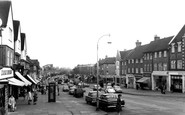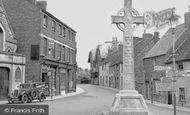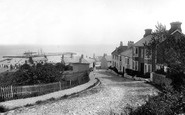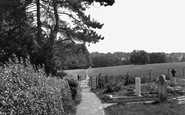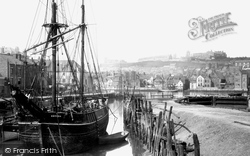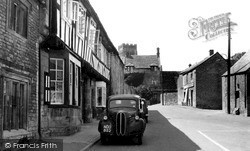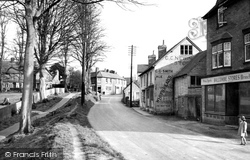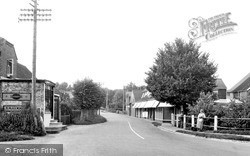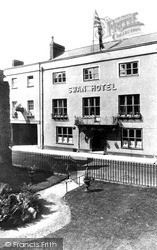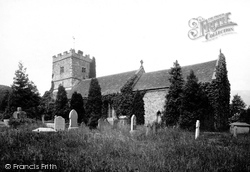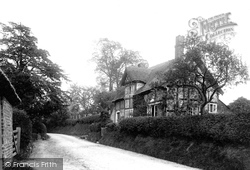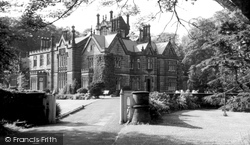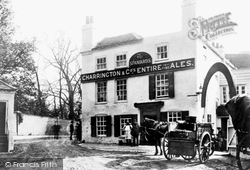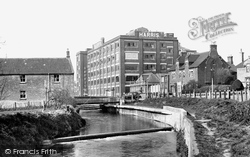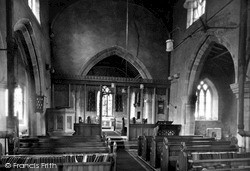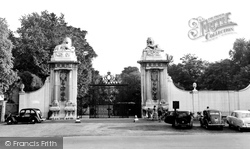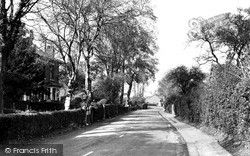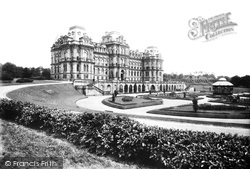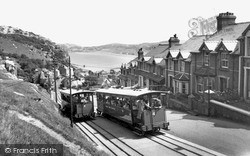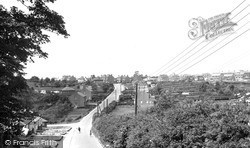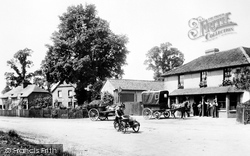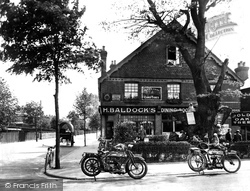Places
18 places found.
Those places high-lighted have photos. All locations may have maps, books and memories.
- Hythe, Kent
- Hythe, Hampshire
- Small Hythe, Kent
- Bablock Hythe, Oxfordshire
- Methwold Hythe, Norfolk
- Hythe, Somerset
- Hythe, Surrey
- Hythe End, Berkshire
- The Hythe, Essex
- Egham Hythe, Surrey
- West Hythe, Kent
- New Hythe, Kent
- Broad Street, Kent (near Hythe)
- Horn Street, Kent (near Hythe)
- Newbarn, Kent (near Hythe)
- Newington, Kent (near Hythe)
- Broad Street, Kent (near Hythe)
- Stone Hill, Kent (near Hythe)
Photos
360 photos found. Showing results 3,781 to 360.
Maps
101 maps found.
Books
10 books found. Showing results 4,537 to 10.
Memories
4,406 memories found. Showing results 1,891 to 1,900.
Walking To West End School From Persondy
Walking along Sycamore Street, Persondy, even now in my mind, I passed, the Roberts' house next door, the Walkers, the Ryalls, can't remember the next house but she was German and very fiery, then the ...Read more
A memory of Abercarn
Football By The Flats
I lived on Daglen(sp) drive opposite the flats in the early fifties. Dad worked at Ford in Dagenham and older sister Brenda went to Bonnyfield? Primary. We played football on the grass outside the flats wandered in the ...Read more
A memory of South Ockendon
The Johnsons
My Grandparents, Albert and Ada Johnson, lived in a little cottage overlooking the village green around the turn of the 19th century, where they brought up seven of 13 children. I think grandad was the doctor's gardener and grandma ...Read more
A memory of South Ockendon by
Kenton 1950's 1960's
I was raised in Kenton from 1954 until I left home in 1971. My visits to Kenton up until 2013 were to visit my elderly Dad, who still resided in Woodcock Hill until his death. The changes over the years have been enormous. Mum and ...Read more
A memory of Kenton
Charlton Park Camp
I was one of a family of Seven children(two girls and five boys) born to Louise and George Tawn. We first lived at Pinkney park where my father was employed as a farm bailif. Due to his affair with the farmers wife we were ...Read more
A memory of Malmesbury by
Halcyon Days!
My name is Geoffrey Pidd, I was born in Hope Hospital in 1944 and lived in Devonshire Road until 1952. Devonshire Road lead to a small enclave of six roads some cobbled and some, as was Devonshire, of compressed cinder/dirt. It was a ...Read more
A memory of Salford by
Days Kids
My memories of Mexborough were playing by the canal down ferry boat lane of church street , canal barges would come along and we would open the old bridge and let them through and the boat man would throw us pennies for our help. We would ...Read more
A memory of Mexborough by
School Journey 1960
Magical trip for a 14 year old working class boy attending Sinjuns Grammar School - a two week school journey to Lyme Regis. We had no car of our own, so bicycles and coach, bus and train journeys provided the backdrop to ...Read more
A memory of Lyme Regis by
Church Fields In Summer Early 1970's
I remember this view as if it were yesterday, my brother Steve, Edward our neighbour and I as well as others from Clifton Close played here all the time. Scaring each other in the woods by the ...Read more
A memory of Farnborough
Captions
4,899 captions found. Showing results 4,537 to 4,560.
Designed by the engineering firm of R H Haynes of Newport and the Frenchman F Arnodin, the bridge was opened in 1906.
Pilkingtom Manor, mostly hidden by the trees on the left, was demolished in 1959, and today only the Dower House (the white gabled building in the centre of the photograph) survives.
The parish church and the abbey ruins on the horizon are reached by the 199 steps from the old part of town.
It was built by the town's rich inhabitants during a period of religious fervour.
All three views taken by the Frith photographer in 1899 are south of the Regatta course, which from 1886 had its finishing line near Phyllis Court.
The 13th-century White House was run by the White Friars as a hostelry for Canterbury pilgrims. A metal pot holding 12 gold and 242 silver coins was discovered in the village in 1897.
A woman waits patiently against the fence by the pond; she has just come from the swimming pool area.
The hotel has some theatrical costumes permanently on show on the ground floor; these were worn by the 19th-century actor Sir Henry (Brodribb) Irving.
The parish of Llanwenarth was divided into two parts, Llanwenarth Citra and Llanwenarth Ultra, by the River Usk. St Peter's Church was in Llanwenarth Citra.
The chancel was rebuilt by the Stanleys in the 1850s to house the tomb of the 1st Lord Stanley, but it may have replaced an even older 13th- century structure.
It became known as the cricket field, and in due course was bought by the Urban District Council.
The house seen here was built in c1840 by the Shaw family, who first owned the estate. In July 1929 the 423 acre park was turned over to the Boy Scouts for the world's first Scout Jamboree.
Said to have been founded by the Spanish Ambassador's valet, the 18th-century pub, with its adjacent toll house, formed the entrance to the Bishop of London's Hornsey estate.
In 1940 'the Reading Rooms were taken over by the Food Office and became a centre for the issue and stamping of ration books'.
This view from the nave looking east into the chancel is not exciting, nor is it enhanced by the solid fuel heating pipes to left and right.
Children were taught to swim in the shallow area in front of the bar, held up by a harness and rope by the instructor. Then they were allowed to swim beyond the bar and eventually up river.
The wrought-iron work is very fine, and is believed to have been done by the French master of wrought iron work, Tijou.
As rural areas were eaten into by the great building boom, pleasant tree-lined areas of mature countryside were more appreciated.
This includes one by William Stanton to Lady Brownlow of about 1700, although it is somewhat obscured by the organ.
The Bowes Museum was designed and purpose-built as a public art gallery by the French architect Jules Pellechet on the outskirts of the historic town of Barnard Castle.
A hidden cable system, the same as is used by the San Francisco tramcars, hauls holidaymakers and enthusiasts up to the Great Orme, the headland that overlooks the Victorian town.
Bought by the Bland family in 1595, it was greatly extended: its frontage measured 600ft, only slightly less than Wentworth Woodhouse near Elsecar, thereby losing a wager made with the Marquis of Rockingham
This 17th-century inn, apparently referred to in the Sherlock Holmes adventure The Speckled Band, stands by the junction of Stoke Road and Station Road.
Adopted as their headquarters by the Cobham Cycling Club, whose plaque is visible on the front wall of the building, the facilities also proved popular with early motorcyclists, like the rider of this
Places (18)
Photos (360)
Memories (4406)
Books (10)
Maps (101)

